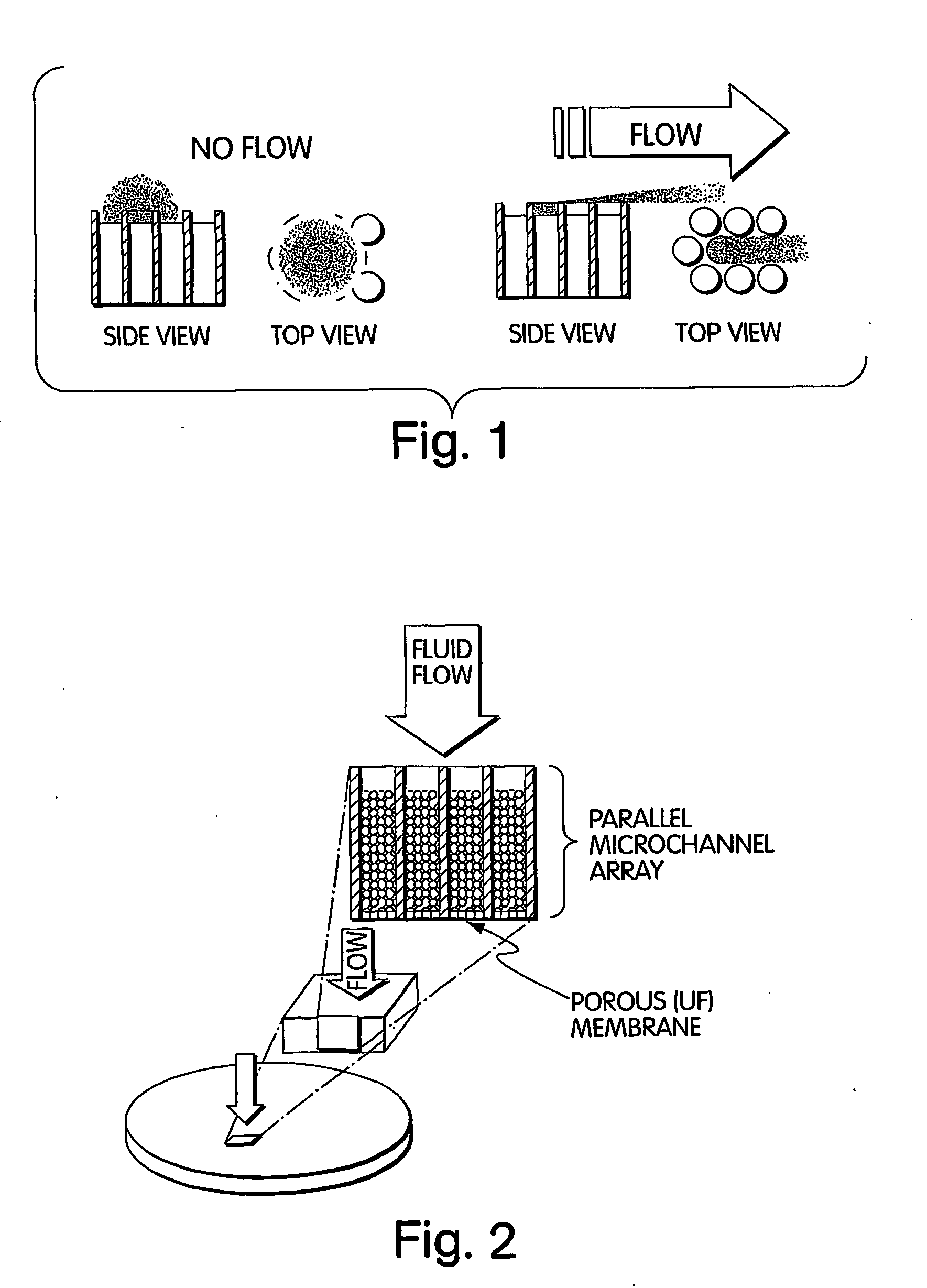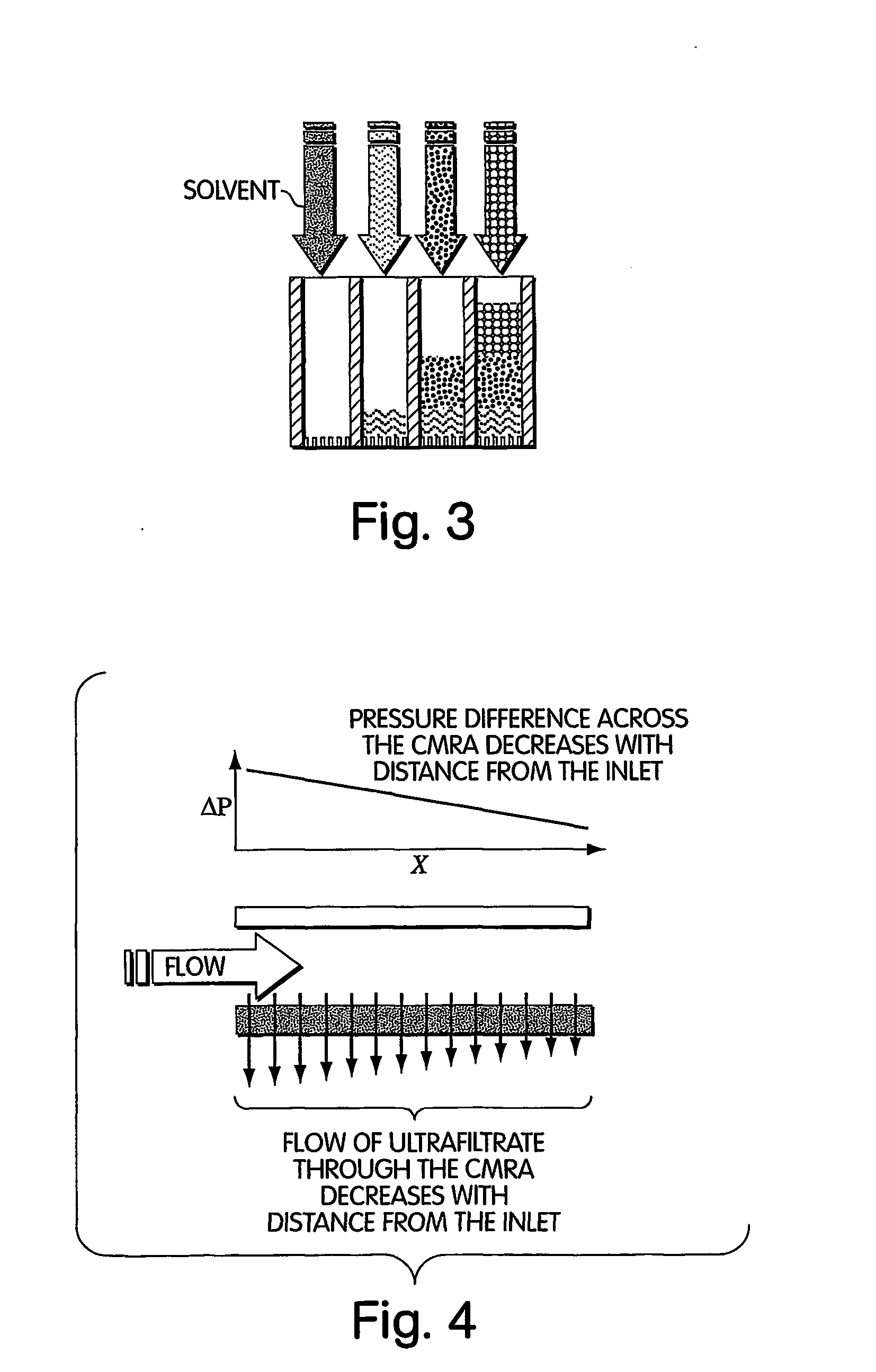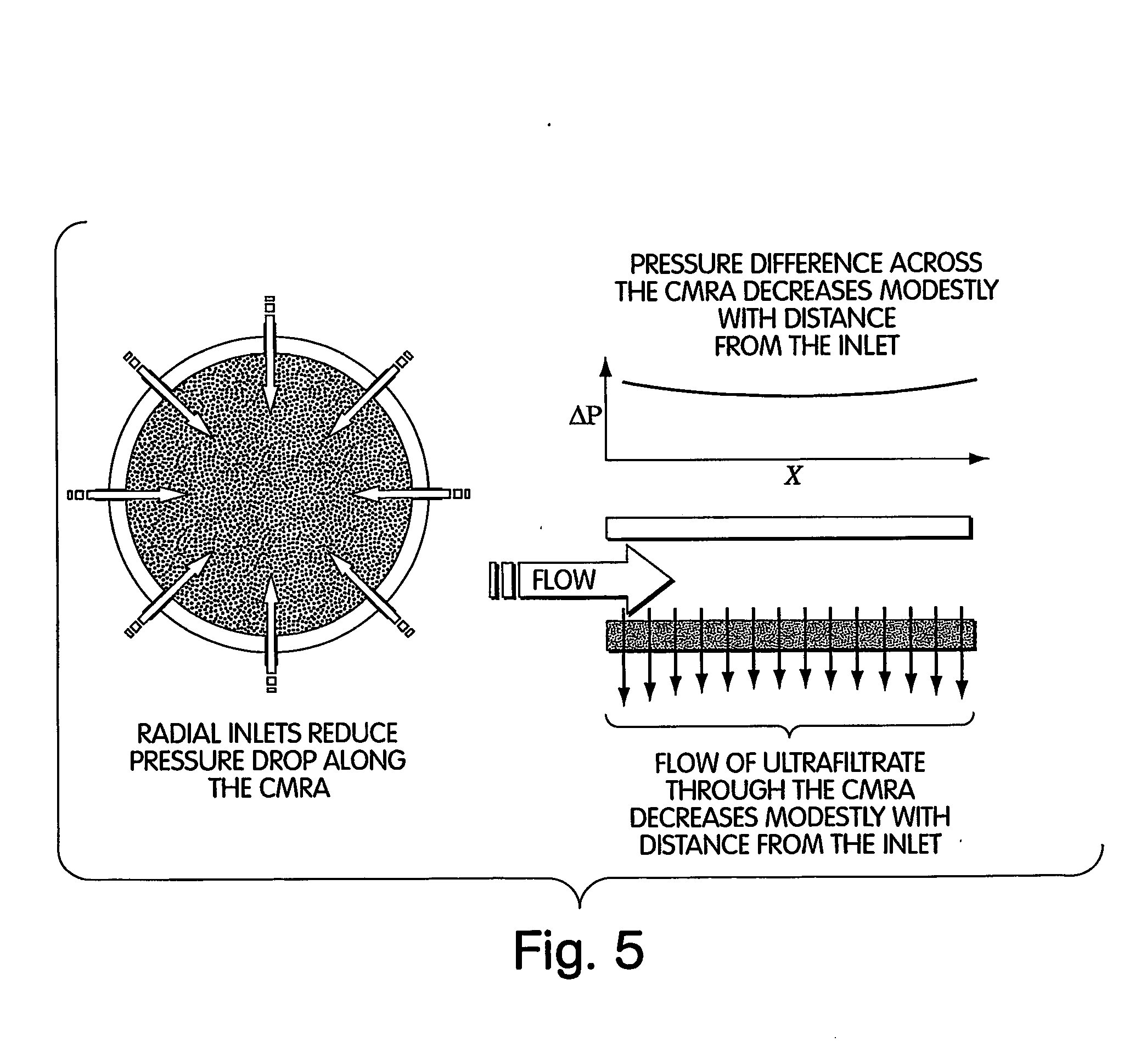Method for isolation of independent, parallel chemical micro-reactions using a porous filter
a technology of porous filter and chemical micro-reaction, which is applied in the field of method for isolation of independent, parallel chemical micro-reactions using a porous filter, can solve the problems of limiting unique reactants and products to a single, affecting the efficiency of chemical micro-reaction, and affecting the quality of chemical micro-reactions, etc., and achieves the effect of rapid and complete removal of reaction products and rapid delivery of reagents
- Summary
- Abstract
- Description
- Claims
- Application Information
AI Technical Summary
Benefits of technology
Problems solved by technology
Method used
Image
Examples
example 1
Pyrophosphate-Based Sequencing in a UMRA Materials
Reagents. Sepharose beads are 30±10 um and can bind 1×109 biotin molecules per bead (very high binding capacity). Sequences of Oligonucleotides used in PCR on the membrane; Cy3-labelled probe J (5′-[Cy3]ATCTCTGCCTACTAACCATGAAG-3′) (SEQ ID NO: 1), Biotinyalted probe (5′-RBiot(dT18) GTTTCTCTCCAGCCTCTCACCGA-3′) (SEQ ID NO:2), SsDNA template (5′-ATC TCT GCC TAC TAA CCA TGA AGA CAT GGT TGA CAC AGT GGA ATT TTA TTA TCT TAT CAC TCA GGA GAC TGA GAC AGG ATT GTC ATA AGT TTG AGA CTA GGT CGG TGA GAG GCT GGA GAG AAA C-3′) (SEQ ID NO:3), and Non-Biotinylated probe (5′-GTTTCTCTCCAGCCTCTCACCGA-3′) (SEQ ID NO:4), Seq1 5′-ACG TAA AAC CCC CCC CAA AAG CCC AAC CAC GTA CGT AAG CTG CAG CCA TCG TGT GAG GTC-3′ (SEQ ID NO:5), PRB1 5′-BS-GAC CTC ACA CGA TGG CTG CAG CTT-3′ (SEQ ID NO:6)
Preparation of Beads. Conjugation of biotinylated single stranded DNA probe to the streptavidin-bound Sepharose beads (Pharmacia Biotech, Uppsala, Sweden) was performed using...
example 2
Production of a UMRA
An ultrafiltration membrane is used to create a dense 2-D array of chemical reactions (“unconfined membrane reactor array” or UMRA) in which reactions are seeded by filtering a catalyst or reactant or enzyme onto the filter surface and whereby convective flow washes away laterally diffusing molecules before they contaminate adjacent reactions. Concentration polarization is necessary to create the packed columns of molecules for the UMRA followed by the sequential packing of molecules via concentration polarization to create stacked columns. Reagents are then flowed through a packed column of the UMRA for sequential processing of chemicals. The ultrafiltration membrane may then be bonded to a second, more porous membrane to provide mechanical support to the molecules concentrated by concentration polarization. The membrane is a Molecular / Por membrane (Spectrum Labs) or Anopore™ and Anodisc™ families of ultrafiltration membranes sold, for example, by Whatman PLC...
PUM
| Property | Measurement | Unit |
|---|---|---|
| pore size | aaaaa | aaaaa |
| pore size | aaaaa | aaaaa |
| molecular weight | aaaaa | aaaaa |
Abstract
Description
Claims
Application Information
 Login to View More
Login to View More - R&D
- Intellectual Property
- Life Sciences
- Materials
- Tech Scout
- Unparalleled Data Quality
- Higher Quality Content
- 60% Fewer Hallucinations
Browse by: Latest US Patents, China's latest patents, Technical Efficacy Thesaurus, Application Domain, Technology Topic, Popular Technical Reports.
© 2025 PatSnap. All rights reserved.Legal|Privacy policy|Modern Slavery Act Transparency Statement|Sitemap|About US| Contact US: help@patsnap.com



